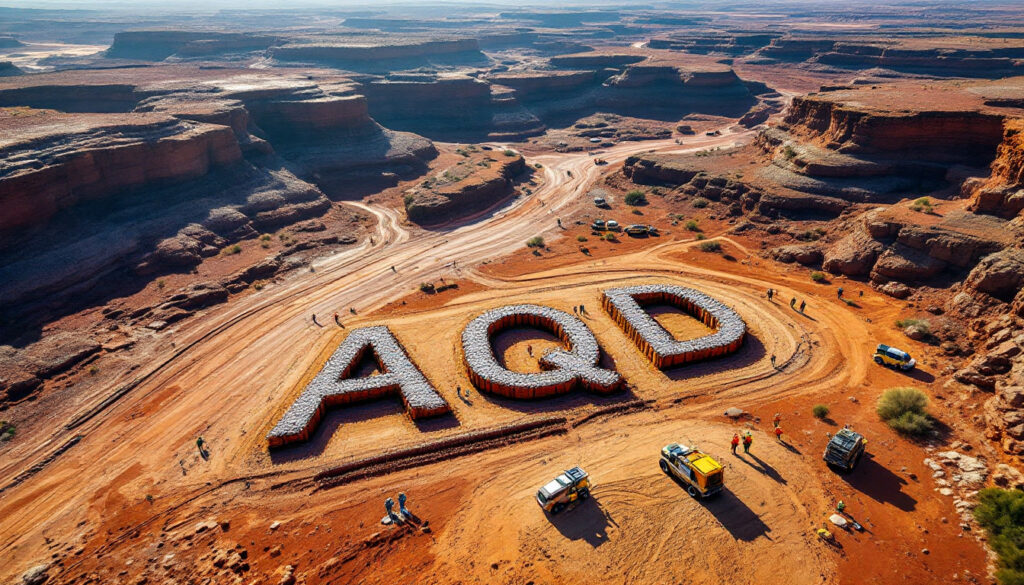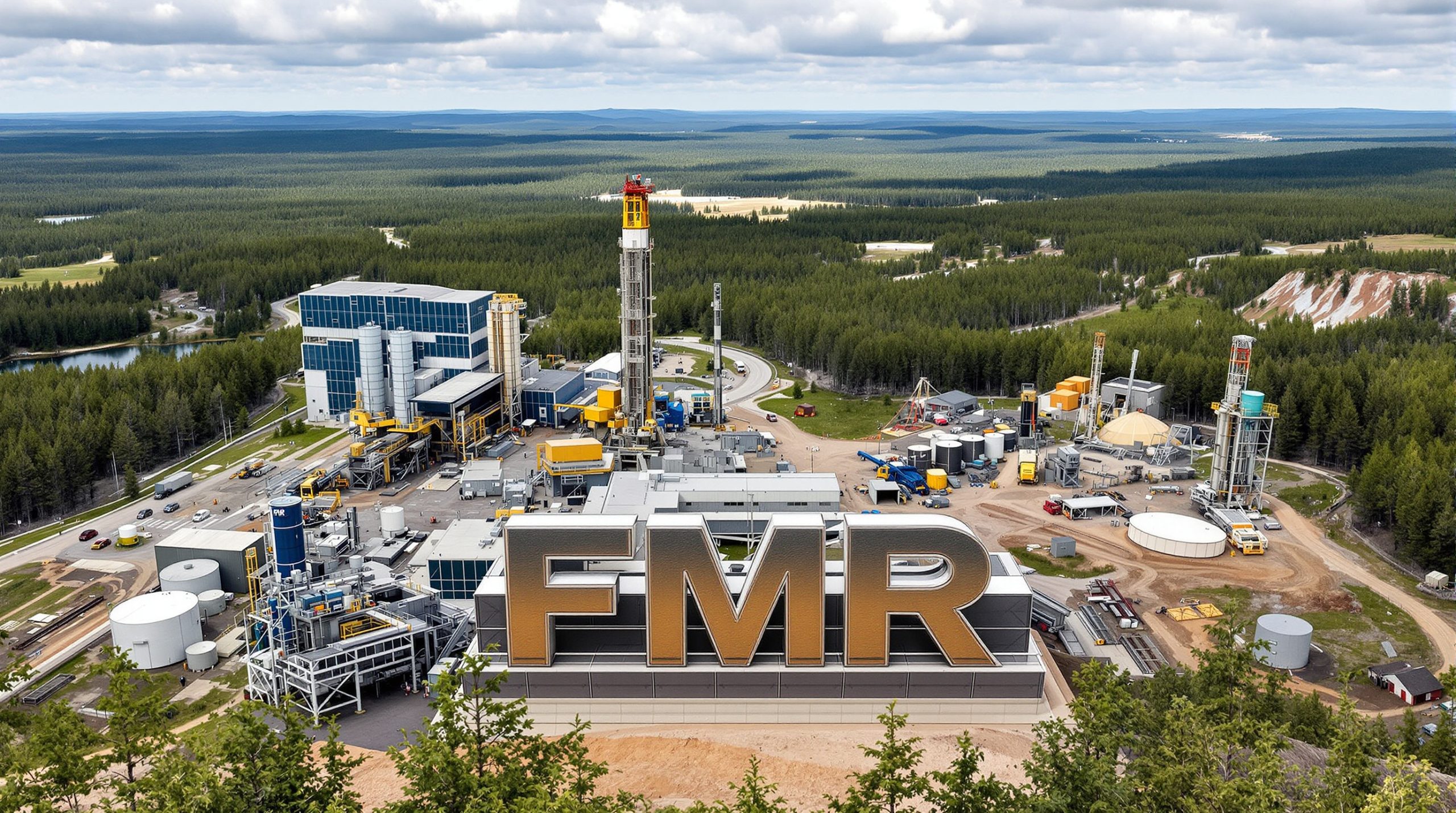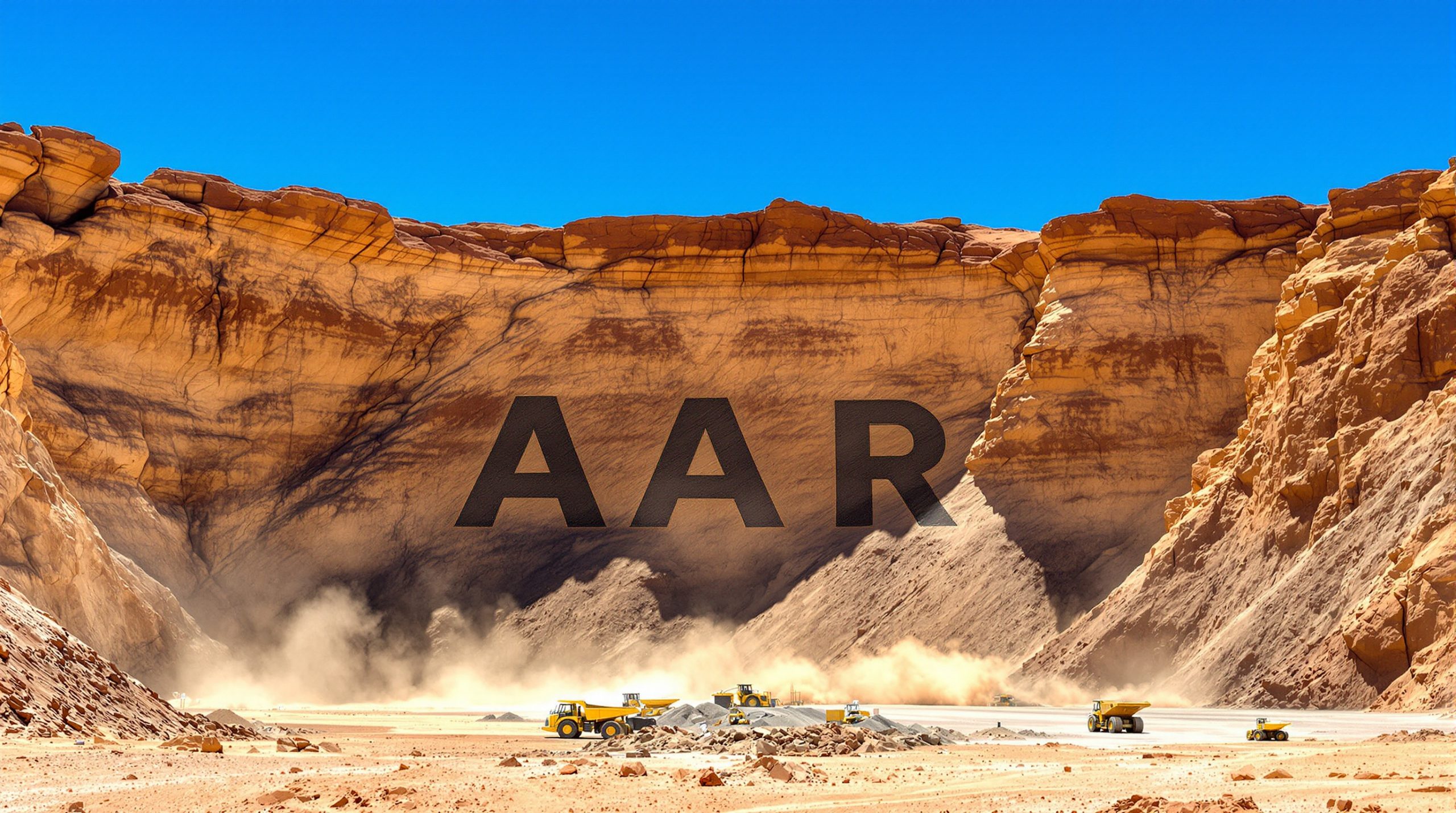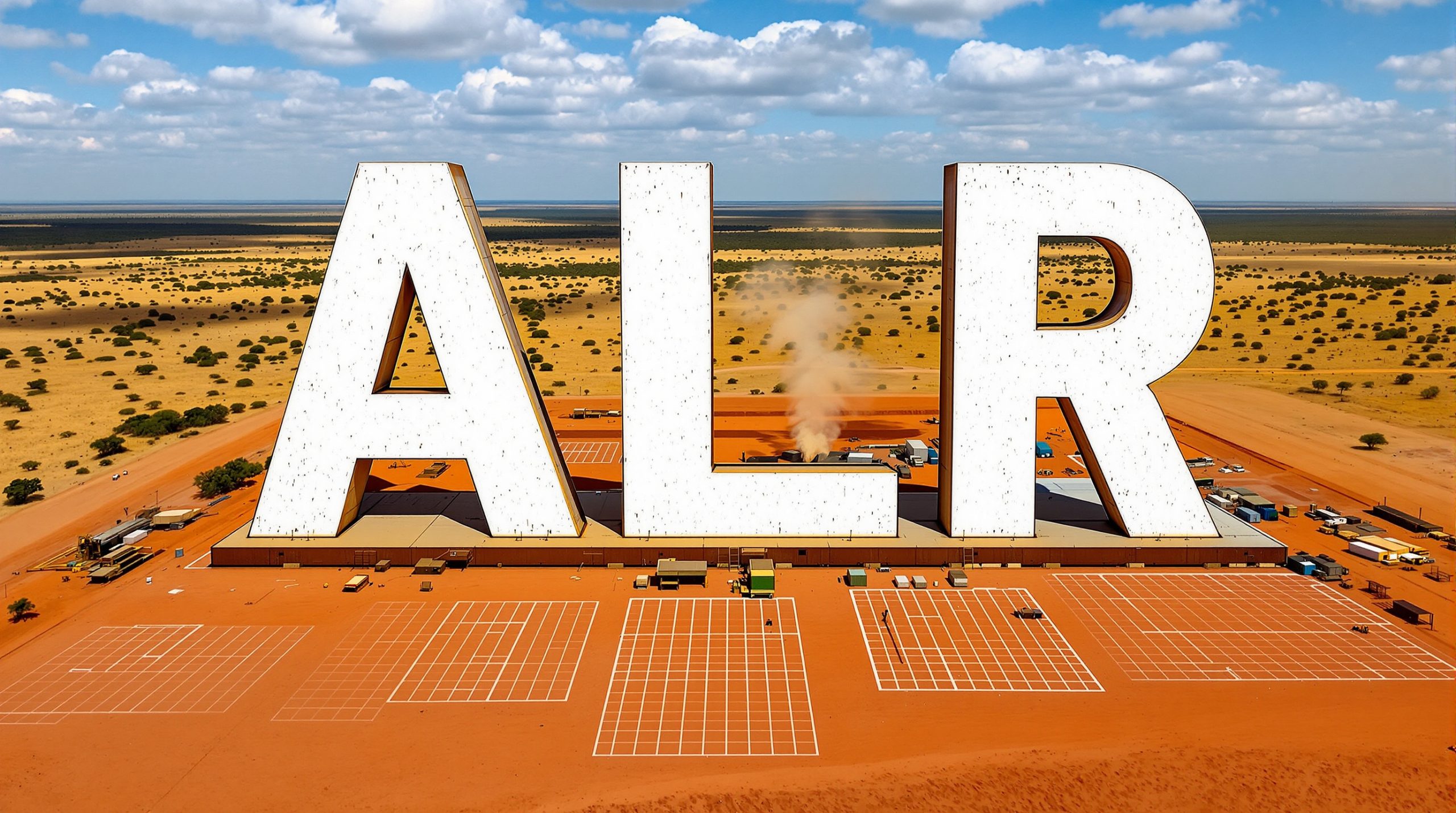New Drill Program Targets Large-Scale Base Metal Potential in Earaheedy Basin
AusQuest Limited (ASX: AQD) has secured another significant opportunity through its Strategic Alliance Agreement (SAA) with South32, adding the Mt Davis Base Metal Project to their joint exploration portfolio. The project, strategically located on the northern side of Western Australia's Earaheedy Basin, will target copper-lead-zinc mineralisation through an upcoming RC drilling program.
This development strengthens AusQuest's exploration pipeline while leveraging South32's financial backing to test compelling electromagnetic and geochemical anomalies in an underexplored region with proven base metal potential.
Strategic Alliance Powers Exploration Without Shareholder Dilution
The addition of Mt Davis to the Strategic Alliance portfolio provides AusQuest with a valuable funding pathway to advance exploration without diluting shareholders. Under the SAA terms, South32 can earn a 70% interest in the project by investing US$4.5 million in exploration, with rights to gain an additional 10% interest by completing a Pre-Feasibility Study.
This structure allows AusQuest to maintain significant upside exposure while minimising financial risk, a crucial advantage in today's challenging capital market environment for junior explorers.
Mt Davis: Large-Scale Targets in a Proven Metallogenic Basin
The Mt Davis Project targets sediment-hosted lead, zinc and copper deposits similar to those in northwest Queensland. Recent exploration by AusQuest has identified multiple large-scale targets warranting immediate drill testing:
- Large VTEM anomalies measuring approximately 1,000m × 500m
- Multi-element soil geochemical anomalies including lead, molybdenum, bismuth, and elevated pathfinder elements (thallium, germanium)
- Structurally controlled sub-basins defined by regional faults in detailed aeromagnetic data
These anomalies occur in a similar stratigraphic position to Rumble Resources' significant Chinook lead-zinc discovery on the southern side of the Earaheedy Basin, suggesting strong geological parallels.
Understanding Sediment-Hosted Base Metal Deposits
Sediment-hosted base metal deposits represent some of the world's most valuable mineral resources. These deposits form when metal-rich fluids migrate through sedimentary basins and precipitate minerals within favourable stratigraphic or structural traps.
What makes them particularly attractive to investors is their potential scale and grade consistency. Examples like the prolific deposits in northwest Queensland (Century, Mount Isa) demonstrate how these systems can create multi-generational mining operations with substantial economic returns.
Key characteristics relevant to the Mt Davis project include:
- Formation within restricted sub-basins where metals can concentrate
- Association with conductive sedimentary units detectable by EM surveys
- Distinct geochemical signatures in overlying soils (as identified at Mt Davis)
- Structural controls that focus mineralising fluids
For investors, understanding this deposit style provides context for AusQuest's exploration approach and the significance of the identified targets.
The Science Behind Sediment-Hosted Deposits
Sediment-hosted base metal deposits typically form in specific geological environments where metal-bearing fluids can be focused and trapped. The process generally involves:
-
Source of metals: Typically derived from metal-rich rocks or from basin brines that leach metals from surrounding formations.
-
Fluid transport: Metal-rich fluids migrate through permeable pathways in sedimentary basins, often driven by heat or pressure differentials.
-
Precipitation mechanism: Metals precipitate when these fluids encounter a chemical trap (such as reduced sediments) or structural trap (such as a fault zone).
-
Preservation conditions: The deposited minerals must be preserved from later erosion or alteration.
The Mt Davis project shows several favourable indicators for this type of deposit:
- The presence of conductive sediments (detected by VTEM) suggests reduced, carbon-rich strata that could act as chemical traps
- Structural features visible in magnetic data indicate potential fluid pathways and trapping mechanisms
- Soil geochemistry showing lead, molybdenum, bismuth and other pathfinder elements suggests metal-bearing fluids have been active in the area
These scientific indicators form the basis for AusQuest's exploration targeting and South32's interest in the project.
Next Steps: Drilling Program to Test Multiple Large-Scale Targets
AusQuest has outlined a clear pathway to advance the Mt Davis project:
- Finalising the scale and design of the RC drilling program
- Completing heritage clearance surveys over planned drill sites and access
- Executing the RC drilling program to test the EM and geochemical anomalies
This methodical approach ensures efficient testing of the project's potential while respecting cultural heritage requirements. The company appears well-positioned to commence drilling once these preparatory steps are completed.
Why Investors Should Follow AusQuest's Development
AusQuest presents a compelling investment consideration for several reasons:
-
Strategic Backing: The South32 partnership provides significant funding support, technical validation, and a pathway to development.
-
Multiple Discovery Opportunities: Mt Davis joins other exploration projects in the AusQuest portfolio, creating multiple potential value catalysts.
-
Target Quality: The identified anomalies at Mt Davis display size and geophysical/geochemical characteristics consistent with significant base metal systems.
-
Location Advantage: Operating in Western Australia provides jurisdictional security and proximity to established mining infrastructure.
-
Commodity Exposure: The copper-lead-zinc targets provide exposure to metals essential for both traditional industrial applications and the energy transition.
Managing Director Graeme Drew summarised the opportunity effectively: "The recent soil sampling and VTEM surveys completed by AusQuest provide strong support for the presence of sediment-hosted mineralisation at Mt Davis, in an area where very little effective exploration has been carried out to date."
Technical Innovation in Target Identification
AusQuest's approach to target generation at Mt Davis demonstrates technical sophistication that enhances discovery potential. The company has effectively combined multiple exploration techniques:
-
Versatile Time Domain Electromagnetic (VTEM) surveys: These airborne geophysical surveys can detect conductive bodies at depth, which often correlate with sulphide mineralisation or conductive sediments associated with base metal deposits.
-
High-resolution aeromagnetic data: This provides structural context and helps identify potential sub-basins where mineralisation might concentrate.
-
Multi-element soil geochemistry: By analysing not just base metals but also pathfinder elements like thallium and germanium, AusQuest has identified subtle signatures that might indicate mineralisation at depth.
The integration of these datasets has allowed for precise target definition, increasing the efficiency of the planned drilling programme and improving the probability of success.
Earaheedy Basin: An Emerging Mineral Province
The Earaheedy Basin has gained increasing attention following Rumble Resources' Chinook lead-zinc discovery. Located on the southern side of the basin, the Chinook discovery demonstrated the region's potential to host significant base metal deposits.
AusQuest's Mt Davis project, situated on the northern side of the basin, targets similar stratigraphic positions and geological settings. This regional context adds credibility to Mt Davis as a potential new discovery in an emerging mineral province.
For investors, exploration in emerging mineral provinces often presents particularly attractive risk-reward profiles. Early discoveries can lead to rapid value creation as understanding of the regional mineral system improves and infrastructure development follows.
For investors seeking exposure to advanced exploration with significant discovery potential and strong financial backing, AusQuest's progress at Mt Davis warrants close attention as drilling preparations advance in the coming months.
Ready to Capitalise on AusQuest's Base Metal Potential?
Discover how AusQuest is advancing its Mt Davis Project with South32's backing and preparing to drill multiple large-scale copper-lead-zinc targets in the prospective Earaheedy Basin. For comprehensive information about AusQuest's growing portfolio of exploration assets and to stay updated on their upcoming drilling programme, visit the company's website today.




